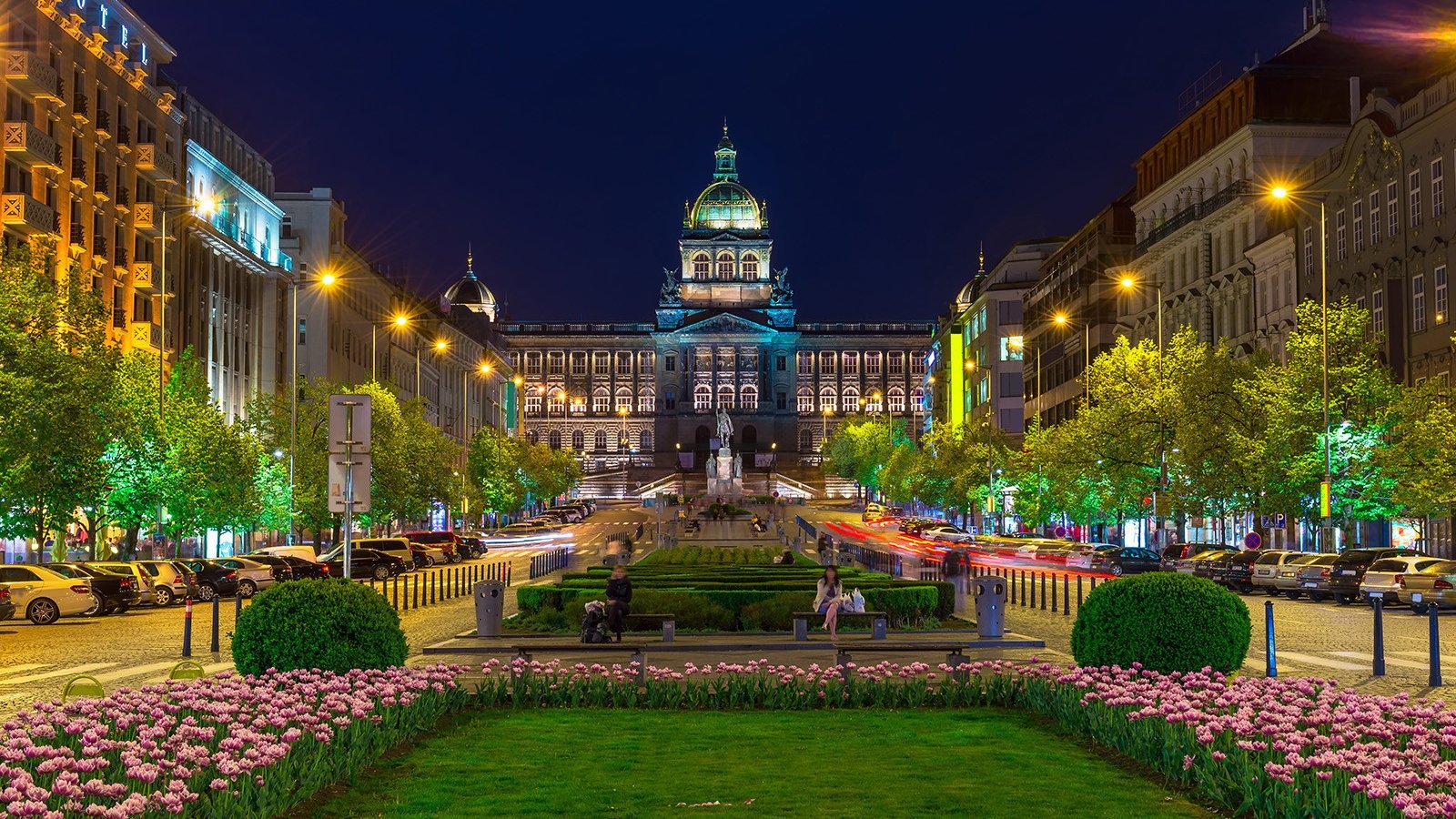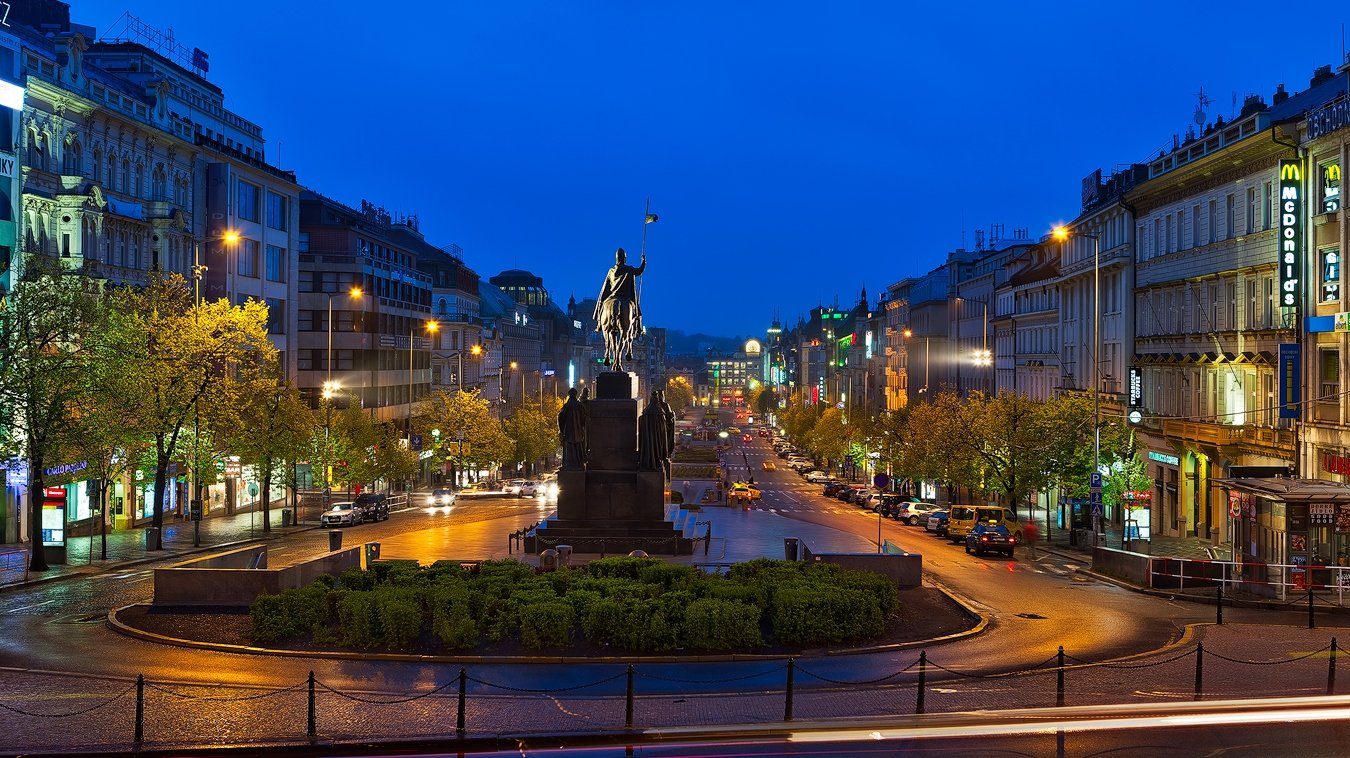
After World War I, the Square saw its popularity surge and lots of new building occurred like luxury houses, banks, shops, hotels and restaurants. The attractiveness of the area extended into its neighbouring streets including 28. října Street, Národní and Na Příkopě.
Trams used to run straight up the square, beginning in 1884 with a horse-drawn one. The first electric tram operation began in 1900 and ran until 1980. After pulling up the tracks, shrubs and flowers were planted and the move was made to make Wenceslas Square a more pedestrianized area. The City of Prague has had thoughts to do some major square remodelling including building a tunnel to relocate the traffic that currently separates the National Museum from the rest of the square to make a larger car-free zone.

There are still some buildings of note to discover on Wenceslas Square. The Jalta Hotel at No. 45 was built in 1958 to fill a vacant lot left following bombing from WWII. It was built specifically as a hotel and is one of the first examples of Czech socialist realism architecture. In its basement an elaborate listening room was designed to spy on visiting dignitaries from the West. The Jalta Hotel runs occasional tours of the bunker. At No. 25 the Evropa Hotel remains one of the most notable Art Nouveau buildings in Prague. The Melantrich Building at No. 36 was built in the late Art Nouveau style for a printing company. During the 1989 demonstrations, speeches were made from its balcony. Today the building is home to a Marks and Spencer. The Baťa store at No. 6 is one of the most significant examples of Czech functionalism and at the time of its building (1928) was one of the most advanced department stores in Europe. The Adria Hotel at No. 26 is one of the oldest buildings on the square.
Nice to know: Wenceslas Square is 750 metres long. The upper end is 63 metres wide while the bottom part is 48 metres wide.




Comments